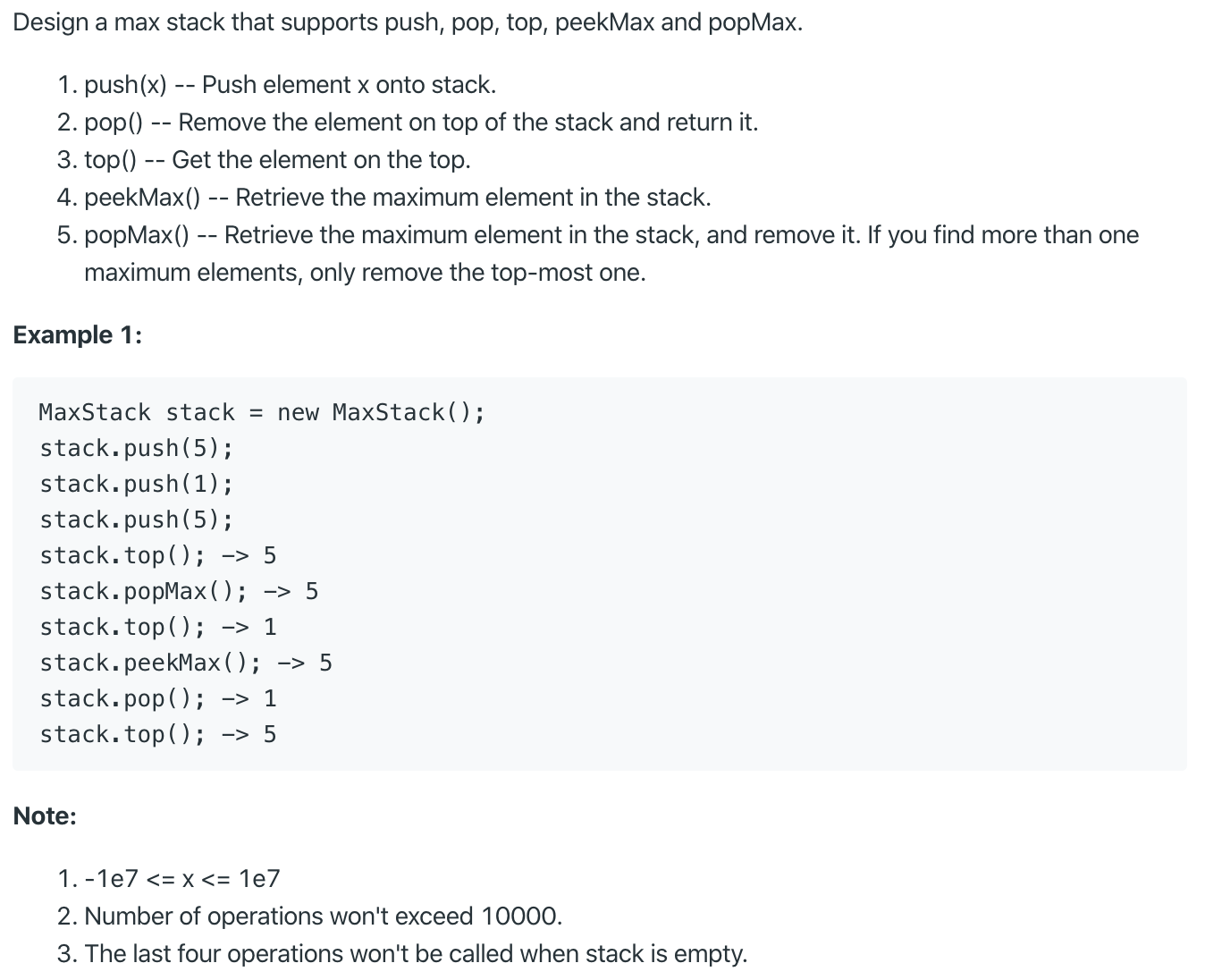Max Stack
franklinqin0 DesignStackHeapTreeMap

See the easier related problem Min Stack.
# Solution
# Two Stacks
It's actually not that straightforward to generalize from the vanilla min stack solution, as the additional function popMax requires storing elements above the max into tmp and pushing back after popping the max.
Complexity
time:
space:
class MaxStack:
def __init__(self):
"""
initialize your data structure here.
"""
self.stack = []
def push(self, x: int) -> None:
if not self.stack:
self.stack.append([x,x])
else:
self.stack.append([x,max(x,self.stack[-1][1])])
def pop(self) -> int:
return self.stack.pop()[0]
def top(self) -> int:
return self.stack[-1][0]
def peekMax(self) -> int:
return self.stack[-1][1]
def popMax(self) -> int:
max_val = self.peekMax()
tmp = []
while max_val != self.stack[-1][0]:
tmp.append(self.pop())
# IMPT: remove the max value from the stack
self.pop()
# ???: can't get this to work
# map(self.push, reversed(tmp))
while tmp:
self.push(tmp.pop())
return max_val
1
2
3
4
5
6
7
8
9
10
11
12
13
14
15
16
17
18
19
20
21
22
23
24
25
26
27
28
29
30
31
32
33
34
35
36
2
3
4
5
6
7
8
9
10
11
12
13
14
15
16
17
18
19
20
21
22
23
24
25
26
27
28
29
30
31
32
33
34
35
36
# Heap/TreeMap (REDO)
will come back once doing heap
- https://leetcode.com/problems/max-stack/discuss/140017/Fast-and-Simple-Python-Solution-(lazy-updates-beating-100)
- https://leetcode.com/problems/max-stack/discuss/309621/Python-using-stack-%2B-heap-%2B-set-with-explanation-and-discussion-of-performance